Primeval Panentheism, Part 1 of 3
The Use & Abuse of Nature Religions
Spirituality is not a mere matter of belief. It is an essential aspect of being human, as normal as breathing, drinking, or eating and just as vital. You shouldn’t need temples or books to tell you how to be spiritual any more than you do for those other activities. For Ancient Man, who was more in harmony with himself and the universe, spirituality was organically self-propelled by his awe at the sheer magnificence of the realities he perceived: his spontaneous spirituality has since ossified into the religions of today as Man degenerated over time. Religions, at their best, allow Man to overcome this degeneration in varying degrees and return to their organic connection to the Divine that was always meant to be. At their worst, religions are precisely the biggest obstacles to restoring this connection. In this three-part series of articles we’ll be talking about how the various religions on Earth today are shattered pieces of Man’s primeval spirituality which was tragically lost and how we can practice this timeless path of the Golden Age even in our own time. In the first part, we will do a survey of many contemporary “Nature Religions” or Polytheism and examine how they reflect the primeval spiritual path to a greater or lesser extent. In the second part we will examine the rise of Abrahamism and its displacement of previous religions, as well as how and why religions come and go in accordance with God’s Will and Man’s need. In the third part we will talk about practical steps we can take to follow the ancient path of truth and righteousness in this Dark Age.
The whole Earth is strewn with temples, and every culture hitherto known has as a quintessential component of its identity a communication with invisible entities and a belief in the immortality of the soul. The ideas of the sacred that a culture has reach deep down into the heart of that culture, far more than their food or their clothing or other merely material differences between cultures. The fact that something as peculiar as prayer, ritual, and sacred space is universal among cultures as different from each other as the Chinese and the Inuit shows that it is a part of human nature. The fact that beliefs about the supernatural or the sacred tend to vary from culture to culture is often seen as proof that it’s all relative, but if we are to examine these things honestly we will see that there are far more similarities. Moreover, we needn’t assume that all cultures are equally right (or wrong) and that their beliefs can’t be reconciled to make a larger picture. The fact that most of today’s most popular religions, which haven’t been around that long in the grand scheme of things, have attached so much dogmatic importance to certain definite intellectual positions that are all mutually exclusionary to each other doesn’t change the fact that spirituality is natural, and it also doesn’t even mean that spiritual expression within those dogmatic confines is necessarily bad. But spiritual expression, the desire to connect with the Divine, with the more-than-material, to have a greater understanding of the role one’s own life plays in a grander narrative is universal, perennial. Humans wouldn’t have a hard-wired desire to connect to divinity unless there really was a divinity to connect to.
If those tribes that have not yet adopted a modern lifestyle, or which adopted one only recently, are a time portal into seeing what Man used to be like, we can surmise that the original spiritual expressions had to do with connecting to The Divine via the natural world. The wonder that man felt at the raw power, glorious beauty, and serene purity of Nature before his senses were dulled by civilization is the springboard of all later spiritual experiences. His sense was that the sight of lightning blazing in the sky and the sound of the wind passing through autumn leaves were not only worth revering in themselves but were also hints of even greater invisible realities. Man experienced The Divine through nature and yet believed that The Creator was distinct from The Creation while yet being present in it. Nature’s beauty, order, and numinous mystery were evidence of God, for whom Nature is the primary means of communication with Man. This theological position, that God interpenetrates the universe while being beyond it at the same time, is called Panentheism, but there was nothing abstract or remotely academic about the primordial Panentheism: Ancient Man had a relationship with God that was completely sincere and as organic, intimate, meaningful, intense, and serious as, for example, a relationship between the sexes. God created all things and is present in all things while yet being seperated from them: He is transcendent, immanent, transcendentally immanent, and immanently transcendental all at once! Ancient Man understood intuitively that places of stillness, purity, and beauty out in the wild, untouched by Man, are places where God is more strongly present and where He can be connected to more easily.
I remember I once attended a sweat lodge ceremony of The Mi’kmaq Tribe of East Canada. There was a large tent, in front of it was a fire where many rocks were being burned. They piled the red-hot rocks into the middle of a pit enclosed in the tent, then they closed the tent airtight and poured cool water onto the rocks. As the steam erupted from the rock-pit we prayed for our communities and ourselves. We prayed to The Creator. The Elder who lead the ceremony said that their ancestors knew God before the Christians came, that they called him Kisu’lk (pronounced gee-sulg) or The Creator or The Great Spirit but that it was the same God of the Bible. I thought about this for a while, because if the claim of The Bible is true that our earliest ancestors worshipped a Supreme Creator God then the God of the Bible is not merely a peculiar Semitic deity but the original God of all peoples. But he had more to say: their people believe that the rocks, plants, animals, and all humans have an immortal spirit that is worthy of respect and that The Supreme Creator Spirit is above all and we connect with Him through Nature. They believe that God is Transcendent and Immanent, simultaneously.
The Natives of North America give a glimpse of the primordial panentheism, then, and this has not been sufficiently pondered by perennialists; they are very distant cousins of the North Europeans by means of the Ancient North-Eurasians who both peoples share as an ancestor: This has not been realized sufficiently by the racialists. Because of how long their culture went without being influenced by the incessant transformations in “The Old World” of Europe and Asia, they provide a vivid glimpse into the ancient past which can remind us of what we have forgotten and how our own distant ancestors lived.
This primeval panentheistic monotheism of The Mi’kmaq is a well-preserved ethnic branch of the original religion of mankind which was lost long ago, and they have kept it due to clinging to their ancient ways for untold millennia. Most tribes all over the Earth, not just The Mi’kmaq, purport a belief in a Supreme Creator Deity, and for some tribes He is seen as distant and so various lesser deities who preside over elements of the universe that The Creator has made serve as His intermediaries for them. This natural and primordial religious attitude has a sense of the intentional “made-ness” of the world, that the world is not dumbly existing all on its own but that it is a mysterious artistic masterpiece rather than a hodgepodge of dead matter brought randomly together. It teaches that this Great Creator Spirit is interested in our lives, that He even directs our destinies for beneficent ends, and in this teaching especially it is very similar to The Bible. There is nothing strange in the fact that primitive peoples who live & die close to Nature’s bosom should intuit the existence of the Supreme Being and His qualities: After all, Nature bears the stamp of the one who made it, just as we can learn something of the character of any artist by studying their works. We learn of God’s majestic might through the lightning and the thunder, of His generous love through the nurturing rays of the sun, of His ever-immaculate purity through the places of virginal wilderness untouched by Man, of His ineffable wisdom through the brilliant stars above that oversee all. The wonders of the natural world remind our hearts of the one who made us to be His. What is immanent gives us tantalizing hints of what is Transcendent.
Without the natural world it would be so much more challenging to know what God is like, which is why the Demonic Powers have been working incessantly to destroy Nature as much as possible. They know very well that an environment as sterile as their home is not one that lends itself to the Remembrance of God. They want to snuff out the Memory of Him as much as possible because without Him we become their slaves. These demons want us to be cut off from His presence as much as they are. God’s presence is harder to detect in a world of concrete and plastic than it is in a world of tall trees and rolling rivers. The lords of the Hells hate nature and everything that bears God’s stamp: They fear that if we spend too much time in Nature that the goodness of the Earth, Seas, and Stars will rub off on us: after all it’s part of the goodness of good that it makes us more good when we are exposed to it which is very good indeed. God says that the natural world that He made is “very good” (Genesis 1:31), so it is then that many Native North Americans, so intimately connected to Nature, would be acquainted with God the Most High: As this is the most good thing of all, to be connected with He who is goodness itself. Being close to the Natural world must be an indispensable part of living a good life. There is a pattern in The Bible that the wilderness is the place where Men go to encounter God, and here we see traces of the primordial panentheism in it: Moses has his theophany at the burning bush (Exodus 3:3) and Elijah must go to a cave in the mountains to hear the still small voice of God (1 Kings 11-13).
Indeed, Nature is not just a way of connecting with the Divine and learning how to live virtuously: It’s the original way. St. Augustine even said that God left us with two scriptures to study and know Him: Nature and The Scriptures1. Since Man was without written scriptures for so long, we can discern that, originally, Nature was perfectly sufficient: the mammoth-hunting tribes of the ice-age from whom the North Europeans partially descend, had no need of a Bible. The Native North American’s Primitive Panentheism that sees the natural world as an intermediary was something common to all mankind, but preserved well among them to a great extent. But as man continued to degenerate, nature could no longer be interpreted correctly which lead to numerous misunderstandings of the nature of reality all of which are ultimately lethally dangerous to the soul. The demons too cunningly devised to plant lies in our hearts so as to obscure the truth of Nature’s meaning so as to sever us from God.
This happened to the Natives of North America as well, though not all of them, and because this had happened to a majority among them God willed that they should be introduced to the Christian religion both to provide for them another path since they had gradually forgotten how to fully walk their old one as well as to renew their ability to interpret Him through Nature, as The Scriptures and The Natural World are mutually complementary and understanding one helps us to understand the other.
Contrary to what is taught by most Traditionalists or Perennialists or religious scholars, it isn’t at all the case that originally man was purely animistic, then became polytheist, then monotheist in a progressive succession. The truth is that originally those three systems of thought were perfectly integrated with each other: Everything natural, even “inanimate” (a misnomer) things like the rocks do indeed have a spirit (animism), grand natural forces like love and war and the elements are indeed ruled by specific personal deities (polytheism/paganism) who serve as deputies of the one supreme God (monotheism). As mankind degenerated, this sense of the harmony of all spiritual ideas was lost. Pure monotheism, pure polytheism, and pure animism are all shards of the original religion practiced in that time which the Vedic Sages call The Satya Yuga / The Golden Age which only a few rarefied souls remember dimly in their hearts. Insofar as any religion is practiced excellently it begins to resemble this original religion, so we can usually get glimpses of it in every culture to varying extents.
Different groups of humans inherited shards of the original religion in accordance with their natures and began to misunderstand the truth in many different ways that were appropriate for their temperaments as the particular peoples they were getting divided into. Logic dictates that there must be a very narrow range of correct interpretations and a nigh-infinite range of incorrect interpretations, of course.
For instance, when the brute facts of Nature are taken just as they are and not interpreted to be a hint of something greater, then what we perceive Nature as is a vast interplay of ever-clashing cosmic forces, with no beginning or end and no clear victor. When we can’t discern Eternal Being amidst the flux of becoming we are left with a mad universe of unrelenting war. Men began to gradually forget Whom it is Nature was meant to signify so he worshipped the forces of nature. Though they had forgotten The Supreme God, these polytheistic men still perceived the various lesser divinities who rule over the elemental and psychical forces of the universe2. They perceived the contests of these deities with each other and mistakenly believed that this is all there was to reality.
To give an example, the tribes of Northern Europe perceived the various lesser deities more than the other aspects of the larger spiritual reality because these deities are noble and spirited as they were. Those gods and those people had always felt a strong kinship with each other. In addition to this, the epic struggles between the gods reminded these tribes of their own existence of perpetual intermittent warfare. For these polytheists, the various lesser divinities who carry out the will of The Supreme Being took on an importance for them that eclipsed their original role as ultimately being subservient to The Supreme Being. As they began to forget The Supreme God all they could still perceive were these warlike deities and so they thought they were the highest entities and their wars the most fundamental aspect of reality. This type of false interpretation is particularly appealing to warlike peoples who saw in their favourite vigorous past-times a cosmic correlation with the way they falsely interpreted creation as nothing other than a series of constant struggles.
We see another example in the worldview of the Pagan Greek: Ouranos is overthrown by Saturn who in turn is overthrown by Zeus and his quarreling Olympian children. This severe metaphysical error of believing that the core of reality is multiple conflicting wills and not one supreme over-arching will that ultimately enforces an unchanging moral law over every other entity and guides us in our spiritual development can lead to stunted spiritual development, a misunderstanding of the purpose of man’s life and the world he finds himself in. Though originally Nature was perfectly sufficient for knowing God for generations of Man and still is for a rare few, it became an obstacle due to Man’s ignorance. Many tribes of Man across the Earth fell one by one from the primordial panentheism to polytheism. The extent to which polytheism was damaging varied. The lesser divinities, who do indeed exist, were in many cases actively and freely living in service to the most High God themselves, often unbeknownst to their worshippers. This is what we see in stories from the Vaishnava sect of Hinduism, which also preserves the original panentheism to a great extent: the various pagan gods, like Indra or Vayu, are themselves worshippers of Vishnu the All-Pervading Preserver of the Cosmos3 even though individual worshippers of the Vedic deities may not know that.
In these cases, pagan devotions were not as spiritually harmful as these lesser divinities could lead their followers to blessed spiritual evolution and “pass along” as it were the worship they received from their polytheistic worshippers to The Most High. Insofar as their cults were maintained with integrity, the Nordic Gods were worthy beings of reverence4. But some of the lesser divinities were tempted by the dark princes of the Hells into pridefully declaring themselves to be the highest beings, and in doing this they gradually took on the likeness of the dark ones whose temptations they surrendered to. Yes, all can be tempted, man or god. We see this as well in the Hindu Scriptures were souls that had accumulated enough merit to become gods can fall from their high station by doing evil and have to expiate their sins by becoming downtrodden humans once more.
A great example of elemental gods passing on the worship they receive to the Most High is seen in the solar religions. Originally, man worshipped the Supreme Being without specific buildings of any kind, as Adam and Eve did who communed with God in the Garden of Eden and many “primitive” tribes do today. For those with the correct attitude, Nature is a sufficient temple. In some cases of variations from the original religion, the Supreme God who is present everywhere has His presence within a specific worthy phenomenon of Nature identified as a way of more easily exulting Him! The Sun is usually taken to represent the Supreme God above all the other things. In these cases the Spirit of the Sun dutifully passed on the worship it received when it was intuited as a symbol for Someone Greater. Thus, many solar religions were purely satisfactory ways of honouring The Supreme God before they degenerated as all religions inevitably do. A most common cause of the degeneration of religions is when it is forgotten that He cannot be reduced down to the things He made and which He is present in. God is present in The Sun; He is not just The Sun, a mere source of light in comparison to God who is The Uncreated Light from whence all other lights come. God is symbolized in The Sun, and this is a worthy symbol of Him, but it could never be all that He is. Whenever some aspect of The Creation is mistaken as all that The Creator could ever be we find the spiritually lethal error of idolatry which makes us misunderstand God, ourselves, and the world. Whole cultures can be so thoroughly entangled in webs of misunderstanding that God has no choice but to destroy them! Indeed, He is present everywhere in His creation, and it is even normal for certain things in creation to remind us of Him more than others, like the sun! But to say God is creation, is reducible to creation: This is the error that makes us doomed. Nothing in creation can fill the hole in our hearts that only The Creator can fulfill.
In the case of Animism, the innumerable spirits that inhabit everything from animals to plants are taken to be the only spiritual reality, though in some cases these spirits are actually inferior to man in the cosmic hierarchy of being. Peoples with a tendency towards animism were acutely aware of the complex web of relationships between the different classes of entities often because they were communitarian cultures with a strong emphasis on social harmony. There is much more variance within the animistic religions than there is in the polytheisms, but in many cases they could not or did not properly classify or sort out these entities. Though lest we think that animism is just for low-iq peoples, let us remind ourselves that the Japanese, so famed even by proud European colonialists for their sophistication and level of high culture, are animists: Their indigenous religion is a highly developed mixture of Animistic tendencies and Polytheism called Shintoism.
The idea that everything is alive, even “non-sentient” objects in Nature like Rocks, is actually true. In the “non-sentient objects”, the spirit is simply asleep, unconscious, and will awaken from its time as a stone or a crystal or some other such thing at the right time and take on the next step of spiritual evolution as an animal. Treating Nature with respect, which Shintoists are particularly good at, helps these things to advance in spiritual evolution faster and of course when we help any spirit in spiritual evolution we help ourselves too. But helping rocks to awaken never takes precedence over helping our fellow man and no object is worthy in the slightest of as much respect as God. After spending many lifetimes mastering survival as an animal, the soul incarnates as a human, a process that happens much faster if the animal is adopted by a human that treats them with love and the animal subsequently obeys the human. A human remembers faintly their lifetimes spent as specific animals and from this we get the phenomenon of “Spirit Animals” or people feeling an affinity with a specific type of animal. Animal-like behaviour in a human in excess leads to the soul backsliding back to an animal incarnation. Many animistic cultures perceive God Himself in certain animals, and indeed in His infinitely passionate playfulness He can indeed directly take on the form of an animal: In Hinduism we see this with Vishnu incarnating as a fish or a tortoise, and in The Book of Revelations we see Jesus appearing as a many-eyed lamb. The same spiritually dangerous error of thinking that God can be reduced to something He created is present here again: God can take the form of a beast but is never just a beast. When this error is made it leads to a worship of the unconscious bestial nature of animals which results in very savage cultures indeed: This error is very prevalent in Africa.
The two Indo-Aryan religions of Hinduism and Zoroastrianism best preserved the truth of the One Supreme Panentheistic Deity who is served by the lesser deities who rule over aspects of creation. We’ve already discussed the former, and in the latter this is seen with the relationship of the Supreme Ahura Mazda and the Yazatas. The fact that the Eastern Aryan peoples were able to preserve so many important truths for so long after the rest of humanity had forgotten them is yet another testament to the immense wisdom and fortitude that they had which makes them tower over all other peoples in history in so many respects, even other Aryan / Indo-European peoples. Certainly in recorded history there is no greater race of spiritually enlightened people. But tragically, even these traditions became perverted as the Eastern Aryans mostly went extinct due to race mixing5, and this is a bitter reminder of the great evil of race-mixing which results in the confusion of humankind and the degradation of the higher types of Man that this world so desperately needs to lead it as the Eastern Aryans did for a time. Indo-Aryan traditions are among the best guides for trying to understand spiritual realities even though due to the race-mixing that happened they are not perfect.
Interestingly, one of the very best representations of the religion of the Satya-Yuga / Golden Age is actually found in the fictional works of JRR Tolkien. Tolkien often claimed that he drew inspiration from vivid dreams that troubled him6. In truth, he was having past-life memories from when he lived in The Golden Age and his works of fiction actually depict with a high degree of accuracy that time-period that is forever outside the ability of modern historians to perceive. The relationship between Eru Illuvatar (as The Supreme Being) and The Valar is in many ways more perfectly reflective of the real dynamic between God and the gods than any other depiction I have seen. Tolkien was actually an Aryan Sage like the inspired Vedic Rishis whose visions compose the content of The Vedas.
The men of the antiquities loved the gods as their teachers, heroes, and inspirations as do many pagans today in Europe and elsewhere who valiantly cling to their ancient ethnic traditions in spite of the tides of time. In the Golden Age especially, men loved the gods as their eldest brethren and understood plainly that they could attain the same level of divinity that they had and rule over other worlds by following the path of virtue and wisdom. They revered these gods as the lords of nature, second in authority only to God Himself! These gods often fought with each other in battles (partially for their own amusement!) but when united only the Omnipotent God Himself could defeat them as was His design. When it came time for The Supreme God in His ineffable wisdom to make it so that the pagan deities faded into the background with the rise of His manifestation in the Abrahamic religions, those who were righteous among them accepted this as His mysterious Will.
If this idea of Pagan Gods submitting to a Supreme God is strange to you then you may be surprised to find out that it is subtly present even in The Bible. In The Bible we see that the God of Abraham has a council whom He asks questions to such as in the opening chapters of the Book of Job. This Divine Council is composed of beings who are sometimes even explicitly called gods as in Psalm 827. Christians today are ignorant of the fact that this “council of gods under God” is made up of the Pagan gods we are all already familiar with, but it’s a unique feature of the Abrahamic religions that they emphasize a particular localized historical manifestation of The Supreme Being to the exclusion of all other supernatural beings and emphasize His Transcendence over His immanence to the exclusion of all His other qualities.
Given that Man’s consciousness was gradually degrading and he was losing his ability to connect with God via Nature, God had come up with another way to find His precious children and open the path to spiritual development to them. So it was that He made Abrahamic religions to spread over all the world. But how is Abrahamism worthwhile? Does Abrahamism have the last word? What about those who correctly understand and practice Nature religions today? We will explore these and other questions in the second part of this series of articles next week.
Thanks for reading. If you have any remarks or questions please leave a comment. I’d love to chat with you. If you enjoyed this, please like and share. If you don’t want to miss upcoming articles be sure to subscribe. For $5 a month you can help support me in building this newsletter into a vehicle to help people reach higher consciousness as well as acess upcoming content exclusively for subscribers:
https://catholicprinciple.com/bookofnature/ provides a decent explanation of St. Augustine’s teaching on this, but I would add the caveat that using the “Two Divine Books” doctrine (Nature and The Scriptures) to defend science is ill-advised as Nature is meant to be humbly interpreted and not strictly “used” scientifically for our own worldly benefit as the scientists do.
Deities who rule over fire, water, vegetation, etc. are examples of elemental deities as are also deities who rule over love, war, wisdom are examples of psychical deities. There is plenty of overlap with many deities ruling over things from both categories of course.
In the Shaivaite sect, the various lesser deities are in subservience to Shiva. In either case, there is the idea that the lesser deities who are quite a bit like us but quite a bit more powerful serve a Supreme Transcendental God who guides all living beings to enlightenment.
While further research is needed, it’s highly likely to me that Odin is a particular manifestation of The Most High God particular to Nordic Peoples.
The overwhelming amount of contemporary pajeets and Iranians are not true Indo-Aryans due to their lack of racial purity and are instead examples of the peoples that the Indo-Aryans mixed with (Dravidians and Elamites, respectively).
A link with a good source and exegesis on this: https://mossdreams.blogspot.com/2015/04/atlantis-haunted-tolkien-and-bent-world.html
Michael Heiser’s excellent book The Unseen Realm explores this subject of the council of gods in The Bible more than I ever could.





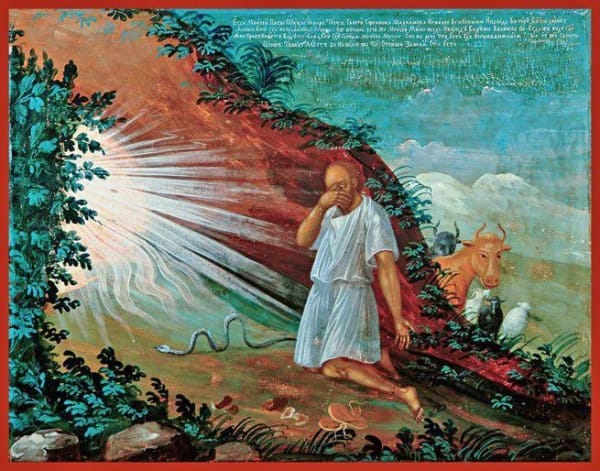
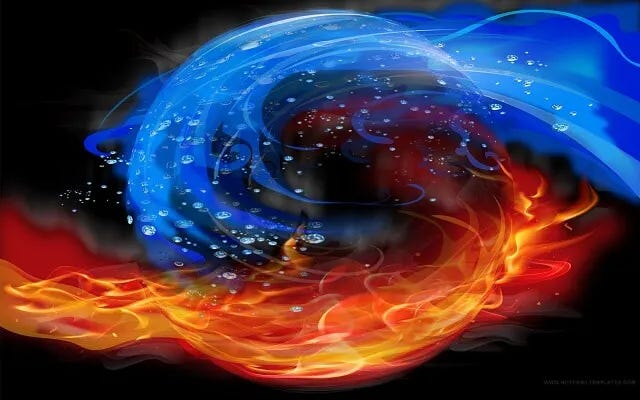
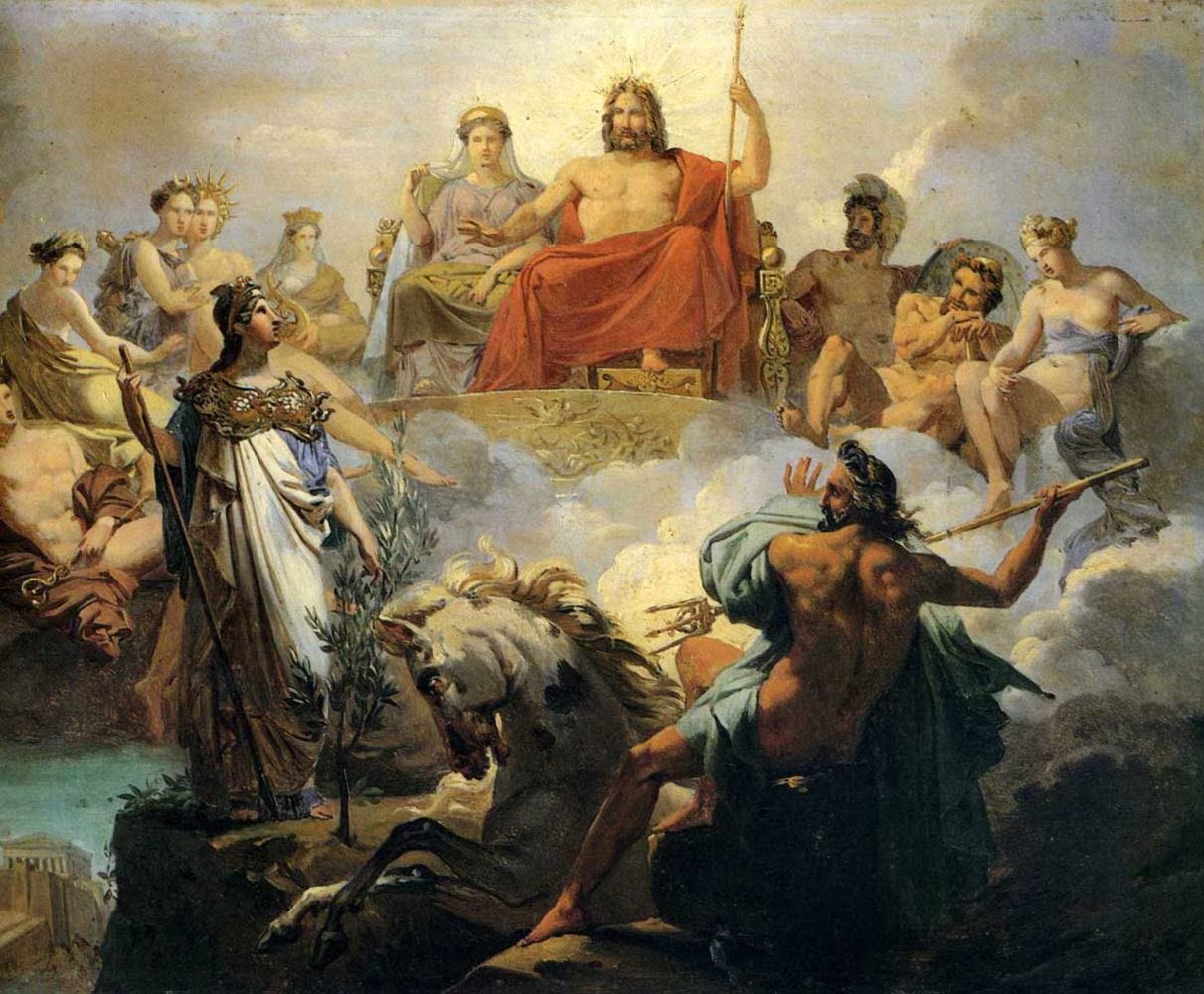
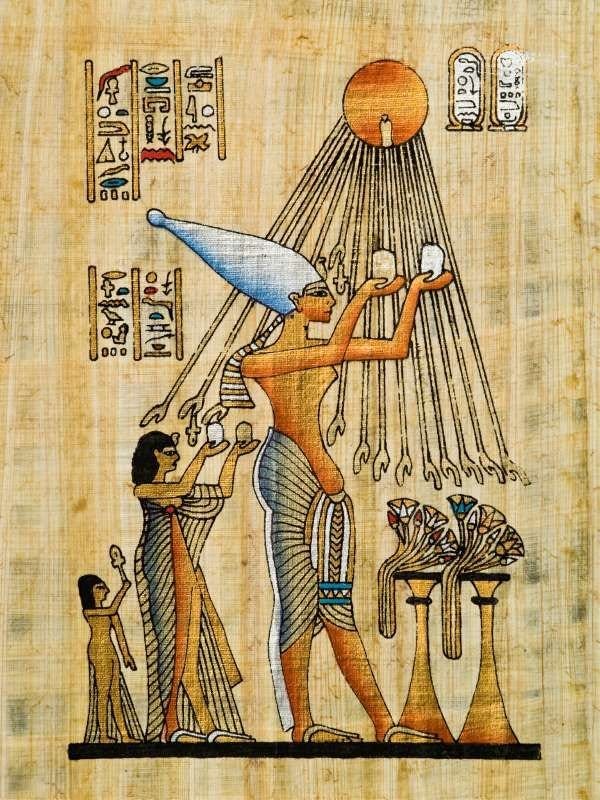
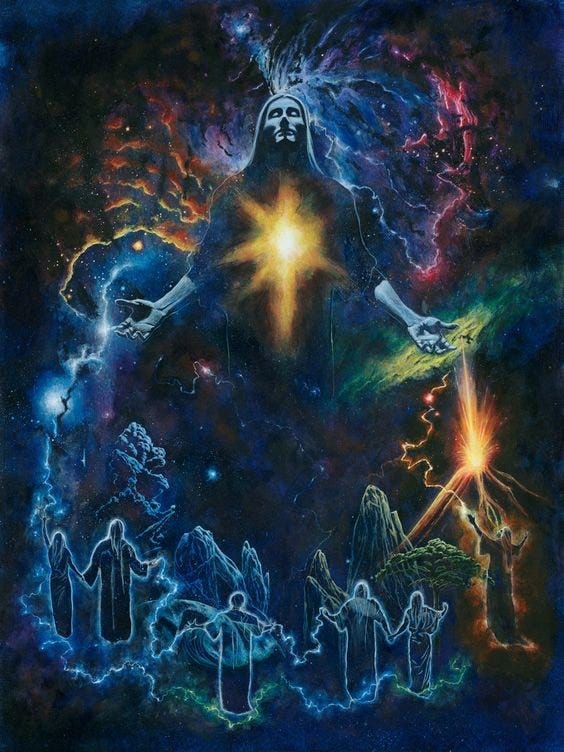
Fascinating theory! It's my first time hearing this conception of the history of religion. Are there any particular works that pushed you in this direction, or was this theory pieced together by yourself?